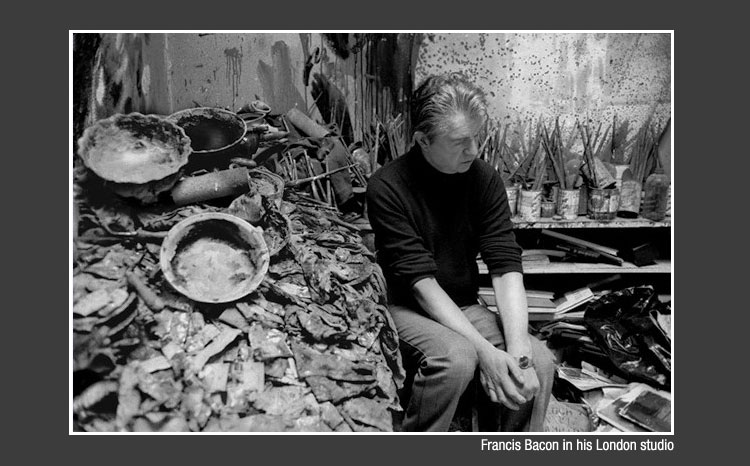|
One of the most haunting images during Robin Laurance’s compelling talk on photojournalism on September 7th was of a young Haitian girl who had been shot dead for stealing a humble tray and a picture during riots.
She lay on the ground, blood coming from a single wound, but then Robin showed us a second picture – a group of photographers from around the world taking pictures of the dead girl. Disturbingly, a key difference in the two photographs was that one of the girl’s arms had been moved so that it created a better picture.
But Robin asked the question – was it wrong to rearrange the girl’s body to maximise the impact and show the harsh punishment metered out for an apparently minor crime? Or should she have been left alone? Another picture showed American troops in Afghanistan apparently in action against the Taliban, but a second image showed it was clearly a posed photo-shoot, with a group of photographers taking pictures of the same soldiers.
In his fascinating talk, called Photojournalism in the Modern Media, Robin examined many aspects of the ethics of how pictures are set up or cropped or simply altered in order to have the desired effect. He has a ring-side view of the industry as one of the country’s leading photojournalists, having worked for many of the world’s major newspapers, and his photographs also feature in the permanent collection of the National Portrait Gallery.
One front cover of The Economist, examining the BP oil spill in the Gulf of Mexico, showed Barack Obama looking down wistfully with an oil-rig in the background, implying he was distressed and in deep thought. In fact, the complete photograph showed that the president was actually talking to a woman who was much shorter – but it had been cropped to give a different impression.
Using his contacts, Robin had been able to acquire the original versions of many well-known pictures before they were re-worked. The issue of taste was raised following the Madrid train bombings when original photographs showed severed limbs on the track – but the published pictures of the same image focused on rescue-workers tending to victims. Was this tampering or avoiding exposing readers to the full horrors of the carnage?
Politicians also try and use the media to establish their image - like Vladimir Putin being photographed in his many macho-guises, such as scuba-diving or in judo gear. Obama and David Cameron both put out photographs of them relaxing with their families – but the White House makes it clear in the photographer’s by-line that it was an in-house picture, whereas it wasn’t obvious that the picture of Cameron entwined with his wife, Samantha, was taken by his personal photographer for PR purposes.
Robin pointed out the truism that a picture can tell a thousand words and this was certainly the case in the aftermath of the tsunami in Japan, with the picture of boats sitting on top of a three-storey building, amidst the unimaginable debris and destruction. And yet The Times resisted putting news reports and photographs on its front page until the Eighties and Germany’s leading daily, the Frankfurter Allgemeine Zeitung, only published the first photograph on its front in 2007.
Robin traced the evolution of photojournalism from a picture of Paris in 1838, through the first front-page photograph in the London Illustrated News, to the creation of Life magazine and Picture Post – and the emergence of powerful war photography, in particular the work of the great Don McCullin, reporting on the starving children of Biafra and the shocking slum conditions in modern-day Bradford.
Elsewhere, infamous pictures from the Vietnam war, such as Kim Phuc, the young girl running away with her back on fire from napalm, and the Vietcong prisoner being summarily executed, became part of the fabric of the Sixties – but Robin suggested they didn’t hasten the end of the war as public opinion was already turning against it.

The evening concluded with a vigorous question-and-answer session in which the future role of photographers was discussed – with so many people now able to take clear, saleable pictures on a mobile-phone – such of those recently published of a naked Prince Harry in Las Vegas.
And the key question was posed – will the Internet lead to a terminal decline in printed newspapers and, with the authenticity of photographs being questioned, will newspapers in future simply be a source of entertainment, rather than reliable news? Over 130 people filled the hall for this enthralling evening, with total proceeds of £820.
“Robin’s talk showed us the work of photojournalism in its many forms, confirming that, indeed, a picture can say a thousand words. But, crucially, he also examined the morality of the process in which photographers sometimes set up photographs to give a misleading impression, or editors crop pictures to change the meaning or protect readers from gruesome details.
There is no doubt that still-photographs have brought the reality of a situation to millions of people but – after listening to Robin’s marvellous, muscular talk, there may now be lingering doubts about the authenticity of the images we’re being shown – Trevor Peake, Bicester
|